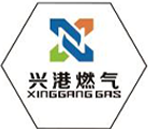
Nov . 10, 2024 19:50
Back to list
Pressure Reduction Station Optimization and Management Strategies
Understanding Pressure Reduction Stations A Key Component in Gas Distribution
Pressure reduction stations (PRS) play a crucial role in the natural gas supply chain, ensuring safe and efficient delivery of gas to consumers. These stations are essential in adapting high-pressure gas from transmission pipelines to the lower pressures suitable for distribution to residential and commercial users. Understanding the function, design, and significance of pressure reduction stations is vital for anyone involved in energy management, infrastructure development, or regulatory oversight.
The Function of Pressure Reduction Stations
At its core, a pressure reduction station serves to lower the pressure of high-pressure gas that is transported through long-distance pipelines. When natural gas is transported over vast distances, it is compressed to high pressures to facilitate flow and reduce volumetric losses. However, before this gas is delivered to end users, it needs to be reduced to a safe, usable pressure. This is where PRS plays its critical role.
The process begins at the entry point of the pressure reduction station, where gas enters at high pressure through inlet valves. Inside the station, it typically passes through a series of regulators which gradually lower the pressure to predetermined levels. Further, the stations are equipped with instrumentation for monitoring and controlling the pressure to ensure safe operation.
Design Elements
.
Additionally, automation plays an essential role in modern PRS. Automated control systems allow for real-time monitoring of pressure levels, flow rates, and potential leaks, which significantly enhances operational safety. Surveillance systems, including cameras and leak detection technologies, are also integrated to provide comprehensive monitoring of the gas flow and station integrity.
محطة تخفيض الضغط

Safety Considerations
Safety is paramount in the operation of a pressure reduction station. The potential risks associated with high-pressure gas include explosions and leaks, making strict adherence to safety regulations necessary. Regular maintenance and inspections are crucial to ensure the integrity of the equipment and to promptly address any mechanical failures.
Operators must also be trained in emergency response procedures, including evacuation plans and leak containment strategies. In many countries, regulatory bodies impose stringent standards regarding the construction and operation of PRS to mitigate risks associated with gas distribution.
Significance in the Energy Sector
The significance of pressure reduction stations extends beyond mere functionality. They are vital components of a larger energy infrastructure that supports economic stability. By ensuring a continuous and reliable supply of natural gas, PRS contribute to energy security, which is fundamental for residential heating, industrial processes, and electricity generation.
Furthermore, as the energy landscape evolves with the increasing integration of renewable energy sources, the role of gas as a transitional fuel becomes more pronounced. Efficient PRS will be pivotal in facilitating this transition, allowing for the effective distribution of gas in conjunction with renewables.
Conclusion
In summary, pressure reduction stations are vital components in the natural gas distribution network. They ensure that gas is delivered safely and efficiently to consumers, with minimal risk. Understanding the operational framework, design considerations, and safety measures associated with PRS underscores their significance in the broader context of energy supply. As the energy sector continues to evolve, the role played by these facilities will remain integral, adapting to future energy needs while ensuring sustainability and safety.
Latest news
-
Safety Valve Spring-Loaded Design Overpressure ProtectionNewsJul.25,2025
-
Precision Voltage Regulator AC5 Accuracy Grade PerformanceNewsJul.25,2025
-
Natural Gas Pressure Regulating Skid Industrial Pipeline ApplicationsNewsJul.25,2025
-
Natural Gas Filter Stainless Steel Mesh Element DesignNewsJul.25,2025
-
Gas Pressure Regulator Valve Direct-Acting Spring-Loaded DesignNewsJul.25,2025
-
Decompression Equipment Multi-Stage Heat Exchange System DesignNewsJul.25,2025

